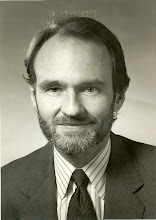Bernanke’s press conference tomorrow is bad news for the Fed watching industry! None of them like us very much anyway since we started the whole thing rolling back in late ‘93; now the rest are actually going to have to find something productive to do.
Background: Pre - 1994 the Fed never announced a policy change; a legion of Fed watchers had to read it in the tea leaves. They’d watch reserves for example to determine any change. Eventually, Greenspan would leak the decision to one of two WSJ reporters, an illegal act which would see any of the rest of us taking our meals through a slot.
After change was announced in 1994, we got all sorts of hate mail. There were 500 tea leaf readers on Wall Street without anything to do.
Tomorrow’s briefing is good news however for many in Congress who have been demanding more transparency. The reverse side is that it could provide insurance against political meddling, no doubt a prime motivation for the briefing in the first place.
Another reason for the historic change may be wild commentary by other policy makers, often at odds with formal policy. Bernanke does not like this stuff. It was rampant in the old days, one point of contention in our testimony. Jerry Jordon for example, the then president of the Cleveland Fed was a loose cannon. Gov Wayne Angell was close behind. Both were dangerous because the market crowd didn’t know any better but to take them seriously.
Bernanke’s comments will of course be measured; he knows markets could swing wildly on the wrong word. He will defend QE II, tell us it will end in June, and, he will outline just how this generosity can be successfully reversed, "if necessary." There are different ways this can be done. One is to sell the cattle herd back. That is, take the money out of the system that way. The Fed may also boost the interest it pays on bank reserves, so called excess reserves held at the Fed. The idea is that this would discourage the banks from venturing elsewhere. They could also stick with the Fed Funds, the rate banks charge each other of O/N loans, and nudge that upwards.
Just how they do it, if they do it, will impact interest rates somewhere along the yield curve (90 days - 30 yrs). We’ll try to provide a heads up on that.
Robert Craven
Background: Pre - 1994 the Fed never announced a policy change; a legion of Fed watchers had to read it in the tea leaves. They’d watch reserves for example to determine any change. Eventually, Greenspan would leak the decision to one of two WSJ reporters, an illegal act which would see any of the rest of us taking our meals through a slot.
After change was announced in 1994, we got all sorts of hate mail. There were 500 tea leaf readers on Wall Street without anything to do.
Tomorrow’s briefing is good news however for many in Congress who have been demanding more transparency. The reverse side is that it could provide insurance against political meddling, no doubt a prime motivation for the briefing in the first place.
Another reason for the historic change may be wild commentary by other policy makers, often at odds with formal policy. Bernanke does not like this stuff. It was rampant in the old days, one point of contention in our testimony. Jerry Jordon for example, the then president of the Cleveland Fed was a loose cannon. Gov Wayne Angell was close behind. Both were dangerous because the market crowd didn’t know any better but to take them seriously.
Bernanke’s comments will of course be measured; he knows markets could swing wildly on the wrong word. He will defend QE II, tell us it will end in June, and, he will outline just how this generosity can be successfully reversed, "if necessary." There are different ways this can be done. One is to sell the cattle herd back. That is, take the money out of the system that way. The Fed may also boost the interest it pays on bank reserves, so called excess reserves held at the Fed. The idea is that this would discourage the banks from venturing elsewhere. They could also stick with the Fed Funds, the rate banks charge each other of O/N loans, and nudge that upwards.
Just how they do it, if they do it, will impact interest rates somewhere along the yield curve (90 days - 30 yrs). We’ll try to provide a heads up on that.
Robert Craven

No comments:
Post a Comment